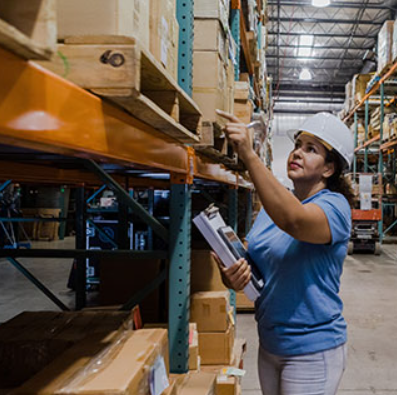
In recent years, many businesses have experienced the consequences of supply chain disruptions, whether it’s a global shortage of microchips or delays in furniture delivery. These disruptions can have a serious impact on operations, often making or breaking a company’s ability to meet customer expectations. So, what can businesses do to safeguard against such challenges and ensure continuity? The answer lies in building a resilient supply chain.
What is Supply Chain Resilience?
Supply chain resilience refers to the ability of a business to effectively respond to and recover from disruptions while maintaining operations. Whether these disruptions are short-term crises, like a natural disaster, or long-term changes, like shifts in global trade, a resilient supply chain can adapt, absorb shocks, and continue functioning.
It’s important to understand that resilience is not the same as efficiency. While traditional supply chain strategies have focused on minimizing costs and optimizing speed, resilience is about balancing these priorities with flexibility, risk management, and adaptability. A resilient supply chain acts like a flexible bamboo rather than a rigid oak tree—able to bend and adjust in response to external forces without breaking.
Why is Supply Chain Resilience Important?
Recent global events have made one thing clear: the supply chain is often the weakest link in business operations. Many companies realized the hard way that having backup plans and diversified suppliers is crucial to survival in times of crisis. Resilience goes beyond maintaining inventory levels—it’s about anticipating problems, forming strong supplier relationships, and using technology to gain real-time insights that allow businesses to stay ahead of potential issues.
Common Supply Chain Disruptions
Supply chains face various types of disruptions. Here are some of the most common ones that highlight the importance of building resilience:
- Natural and Environmental Disruptions
- Natural disasters like earthquakes and hurricanes
- Extreme weather events such as heatwaves or floods
- Climate change effects on agriculture and transport routes
- Pandemics and health crises
- Geopolitical and Economic Disruptions
- Trade wars and tariffs
- Political instability or regional conflicts
- Currency fluctuations and economic sanctions
- Border closures and customs delays
- Operational and Technical Disruptions
- Cyberattacks and system failures
- Transportation breakdowns
- Labor strikes and worker shortages
- Equipment failures or power outages
- Market-Related Disruptions
- Sudden shifts in consumer demand
- Raw material shortages
- Supplier bankruptcies
- Changes in market trends or consumer preferences
With these disruptions becoming more frequent and varied, it’s critical for businesses to have strategies in place that allow them to continue operating smoothly, regardless of external factors.
Five Proven Strategies to Strengthen Your Supply Chain’s Resilience
Building resilience into your supply chain isn’t an overnight task, but it is a necessary one. Here are five key strategies that can help you create a stronger, more adaptable supply chain:
- Increase Transparency
To build resilience, you need to understand where your vulnerabilities lie. Start by identifying critical components in your supply chain and determining which suppliers may pose a risk. Once you know where the potential weaknesses are, engage with your suppliers, and set up joint agreements to monitor lead times, inventory levels, and performance. By establishing an early-warning system, you can proactively address issues before they turn into disruptions.
- Diversify Your Operations
Businesses that spread their operations across multiple regions and suppliers are better equipped to handle disruptions. By avoiding geographical concentration, you lower the risk of having all your operations affected by the same crisis. This strategy ensures that if one facility or supplier faces issues, others can step in to keep operations running smoothly.
- Source Locally
Local sourcing offers several advantages when it comes to building supply chain resilience. It reduces transportation costs, shortens lead times, and creates closer relationships with suppliers. Moreover, local suppliers are often more responsive, and establishing face-to-face connections can help during times of crisis. Additionally, sourcing locally can be a positive environmental choice, as it reduces energy consumption associated with long-distance shipping.
- Create Redundancy
Redundancy involves maintaining extra capacity or backup systems in case of emergencies. While many companies focus on lean supply chains to minimize waste, having some buffer inventory or additional resources can make all the difference during a crisis. The key is to find a balance between operational efficiency and preparedness for unforeseen events. For example, having extra inventory or workforce capacity allows businesses to respond quickly without unnecessary delays.
- Leverage Technology for Risk Assessment
Investing in technology can greatly enhance your ability to measure and manage supply chain risks. Regular audits of suppliers and risk assessments are essential for identifying vulnerabilities and mitigating potential threats. By using software that offers predictive analytics, businesses can model different scenarios and prepare for disruptions in real-time. Advanced data management tools and business intelligence systems can provide valuable insights that help companies stay ahead of issues before they escalate.
Conclusion
Building a resilient supply chain requires more than just having contingency plans in place. It’s about creating an adaptive system that can anticipate and respond to disruptions efficiently. By increasing transparency, diversifying operations, sourcing locally, maintaining redundancy, and leveraging technology, businesses can build a supply chain that not only survives but thrives in the face of uncertainty. Resilience, ultimately, isn’t just a reaction to problems—it’s a proactive approach that can transform challenges into opportunities for growth and innovation.












